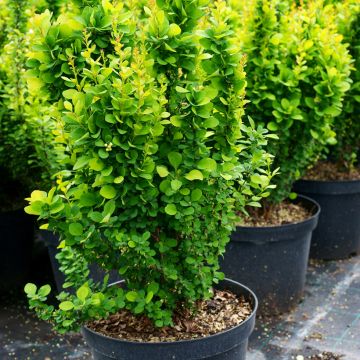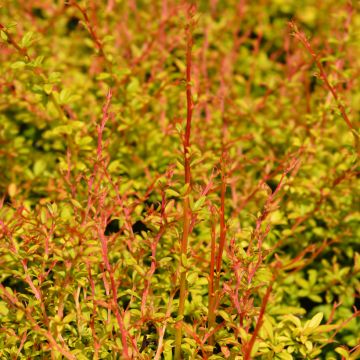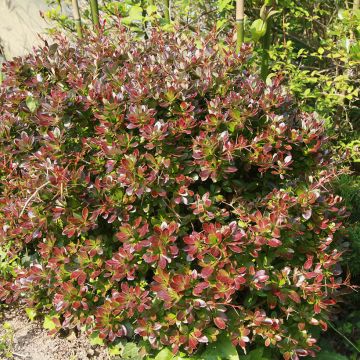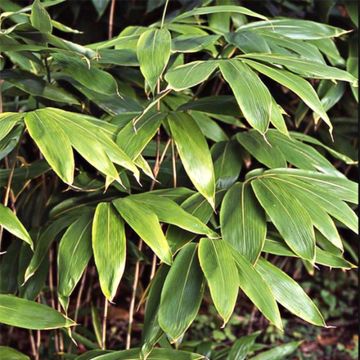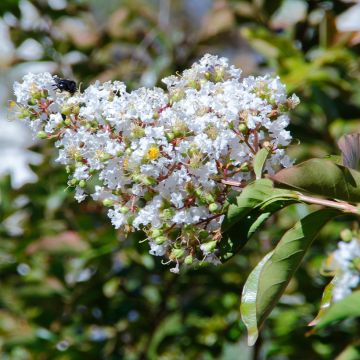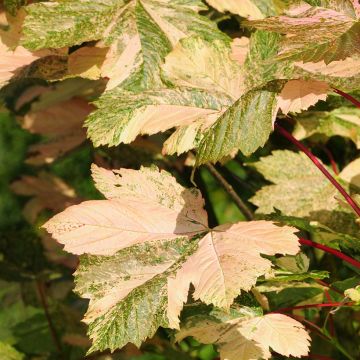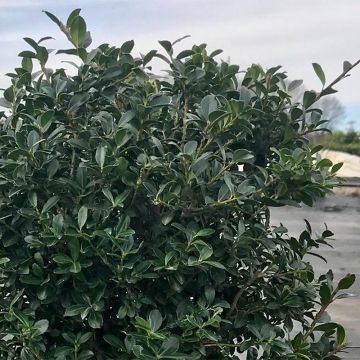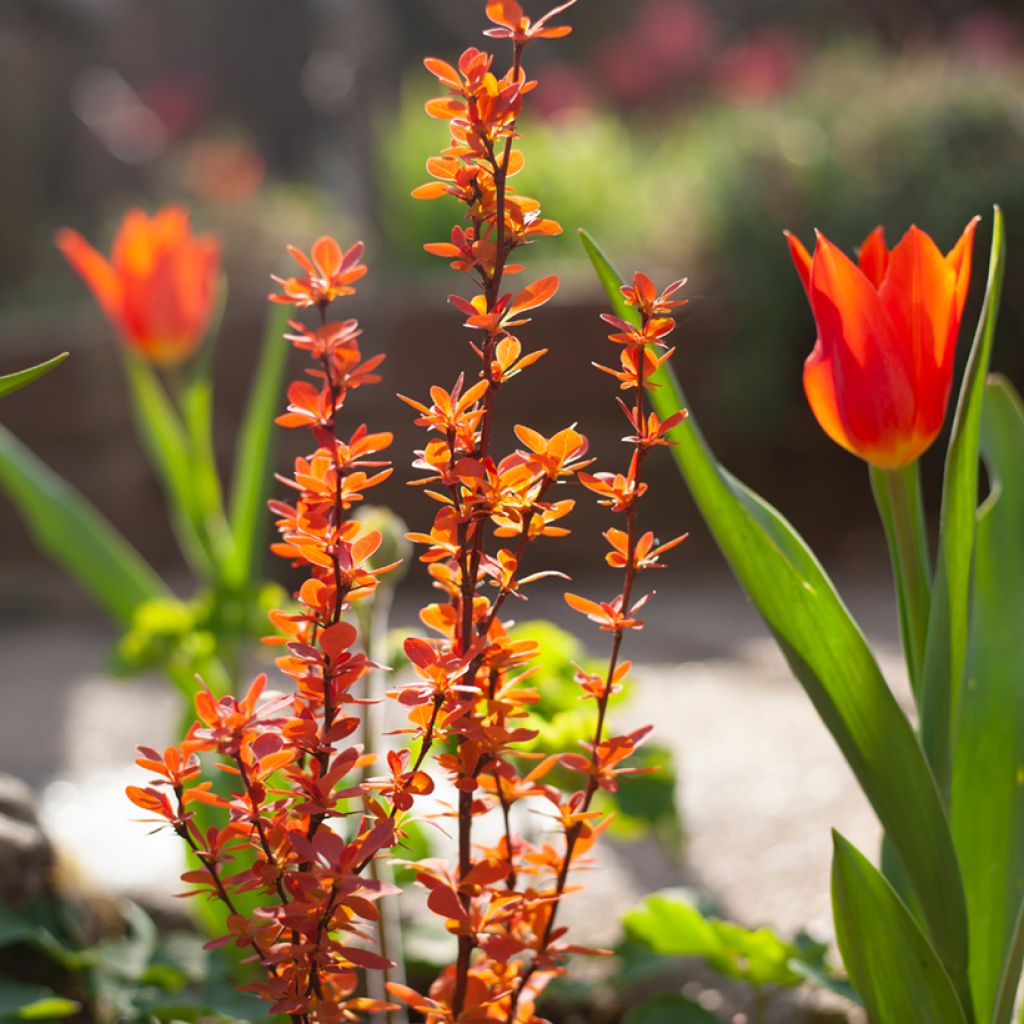

Berberis thunbergii Orange Ice - Barberry


Berberis thunbergii Orange Ice - Barberry


Berberis thunbergii Orange Ice - Barberry
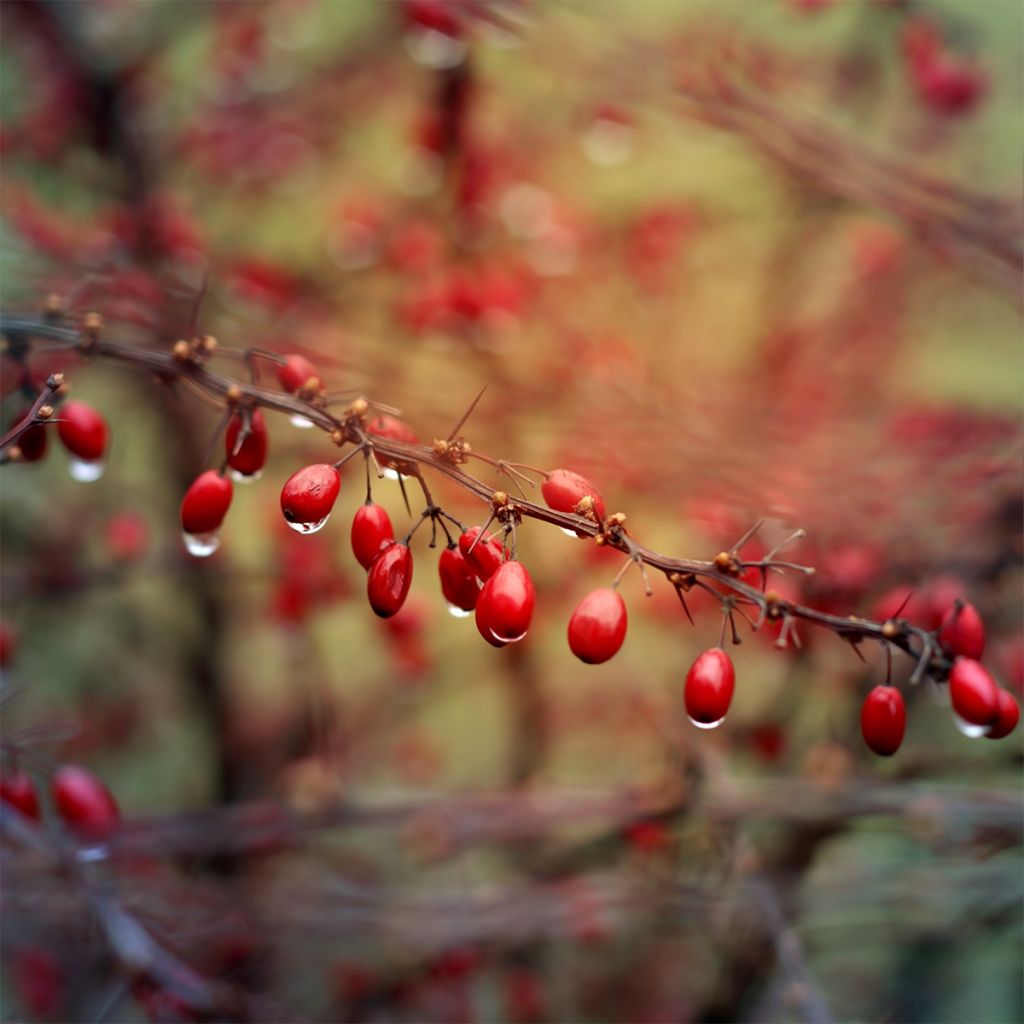

Berberis thunbergii Orange Ice - Barberry


Berberis thunbergii Orange Ice - Barberry
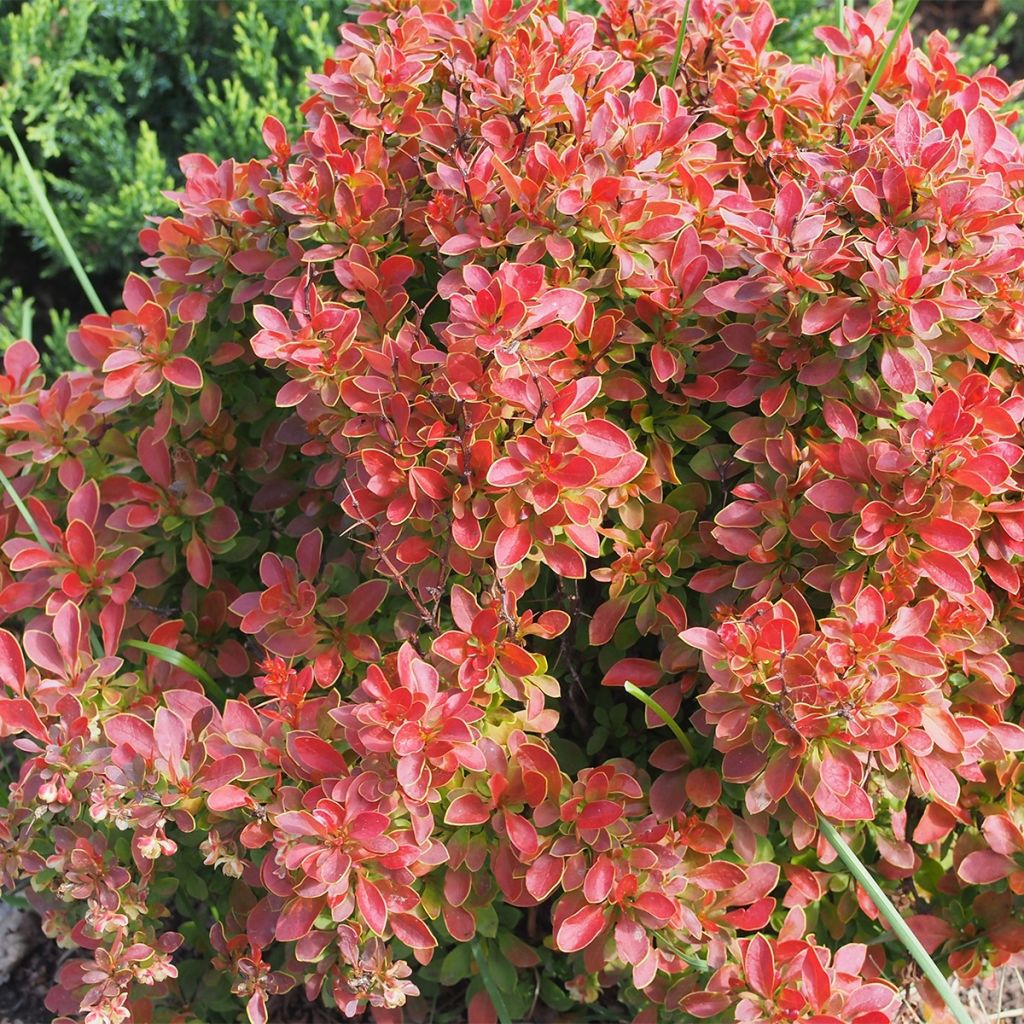

Berberis thunbergii Orange Ice - Barberry
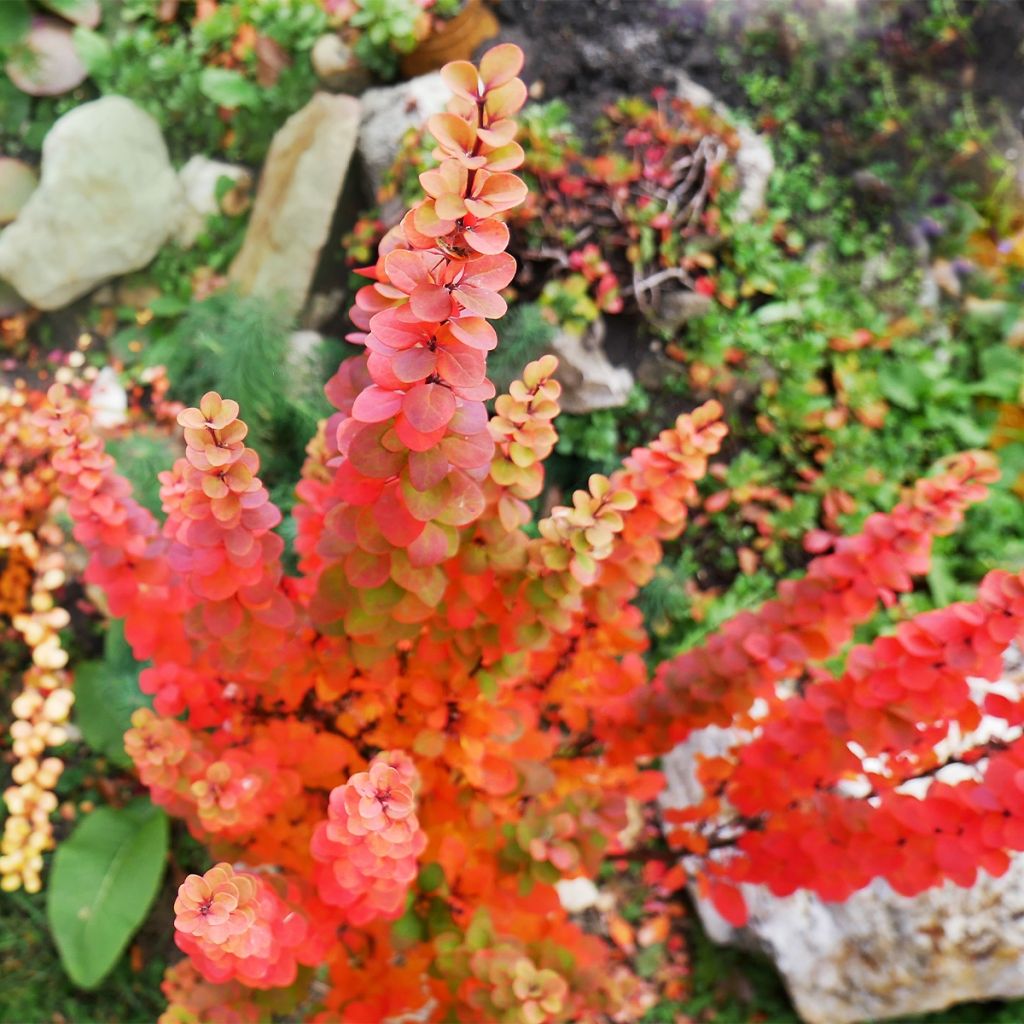

Berberis thunbergii Orange Ice - Barberry
Berberis thunbergii Orange Ice - Barberry
Berberis x thunbergii Orange Ice ®
Japanese Barberry
Beautiful bush received well developed and very colourful, I am delighted. Planted on the same day of delivery, it has started well but for the past 2 days, tiny caterpillars (or green worms barely 1 cm (0in) long) have been nibbling on the leaves. What product should I use? I first cleaned by hand with soapy water; I don't want to use too many chemicals as I have a small cat. Thank you for your response.
Marie-Claude, 19/05/2023
Why not try an alternative variety in stock?
View all →This plant carries a 24 months recovery warranty
More information
We guarantee the quality of our plants for a full growing cycle, and will replace at our expense any plant that fails to recover under normal climatic and planting conditions.
From €5.90 for pickup delivery and €6.90 for home delivery
Express home delivery from €8.90.
Does this plant fit my garden?
Set up your Plantfit profile →
Description
Berberis thunbergii Orange Ice is a recent variety of barberry that doesn't go unnoticed with its vividly coloured foliage in shades of orange and red. This flamboyant, almost fluorescent colour harmonizes with its small yellow flowers in spring, and then its red berries in late summer. With its compact and upright habit, this bush is perfectly suited for growing in pots, flowerbeds, and small gardens.
The Berberis Orange Ice is a Polish variety recently introduced in the horticultural trade. It is a hybrid resulting from the Berberis thunbergii, also known as Japanese barberry, a bush from the berberidaceae family native to Japan. This Orange Ice variety is characterized by modest development, a bushy, upright, and dense habit, slow growth, and remarkably coloured deciduous foliage.
The plant will slowly reach a height of 80-90cm with a spread of 30 to 50cm (11.8 - 19.7in). The upright and dense branches of this variety bear mildly aggressive thorns. The foliage is its main asset and is composed of obovate leaves (ovate, with the upper part of the leaf wider than the lower part). In spring and summer, their colour is coppery orange while in autumn, it becomes a mix of red, orange, and yellow tones. In April-May, numerous clusters of 1 to 6 small flowers bloom on 1-year-old stems. These bell-shaped flowers are 1cm (0.4in) long and yellow with red stripes. They are highly nectar-rich and followed in September-October by small bright red spherical fruits measuring 6 to 8mm (0.2 - 0.3in) long, which persist on the branches for part of the winter. The plant is devoid of leaves in winter.
This Berberis Orange Ice is a hardy bush which is very adaptable to the soil and tolerates pruning very well but definitely prefers sunny exposures. Its remarkable foliage deserves a prime location in front of taller bushes with red flowers (Japanese quinces, roses, Weigelas) or even yellow to orange (Japanese kerria, Lena Orange broom, Dropmore Scarlet honeysuckle). It can also be combined with the grey foliage of shrubby wormwoods or the anise green of lady's mantle... This bush can also be used to highlight the edge of a pathway. It also thrives when grown in a large pot to decorate a terrace or balcony.
Report an error about the product description
Plant habit
Flowering
Foliage
Botanical data
Berberis
x thunbergii
Orange Ice ®
Berberidaceae
Japanese Barberry
Cultivar or hybrid
Other Berberis - Barberries
Planting and care
Orange Ice Berberis thrives in full sun or partial shade, with autumn colours being more intense in the sun. It is a plant that can withstand harsh winters and moderate periods of drought. Plant it in any type of soil as long as it is well-drained and deep. The planting hole should be twice the size of the root ball, add compost, and water generously. It is a bush that can handle pruning very well: from June to August, after flowering, prune the faded branches at the level of the young lateral shoots to encourage the growth of new branches. Be careful not to touch the branches with bare hands, as they have thorns that are difficult to remove once they penetrate the skin. Berberis may be susceptible to powdery mildew and black leaf spots. Aphids can also invade it.
Planting period
Intended location
Care
-
, onOrder confirmed
Reply from on Promesse de fleurs
Striking foliage shrubs
Haven't found what you were looking for?
Hardiness is the lowest winter temperature a plant can endure without suffering serious damage or even dying. However, hardiness is affected by location (a sheltered area, such as a patio), protection (winter cover) and soil type (hardiness is improved by well-drained soil).

Photo Sharing Terms & Conditions
In order to encourage gardeners to interact and share their experiences, Promesse de fleurs offers various media enabling content to be uploaded onto its Site - in particular via the ‘Photo sharing’ module.
The User agrees to refrain from:
- Posting any content that is illegal, prejudicial, insulting, racist, inciteful to hatred, revisionist, contrary to public decency, that infringes on privacy or on the privacy rights of third parties, in particular the publicity rights of persons and goods, intellectual property rights, or the right to privacy.
- Submitting content on behalf of a third party;
- Impersonate the identity of a third party and/or publish any personal information about a third party;
In general, the User undertakes to refrain from any unethical behaviour.
All Content (in particular text, comments, files, images, photos, videos, creative works, etc.), which may be subject to property or intellectual property rights, image or other private rights, shall remain the property of the User, subject to the limited rights granted by the terms of the licence granted by Promesse de fleurs as stated below. Users are at liberty to publish or not to publish such Content on the Site, notably via the ‘Photo Sharing’ facility, and accept that this Content shall be made public and freely accessible, notably on the Internet.
Users further acknowledge, undertake to have ,and guarantee that they hold all necessary rights and permissions to publish such material on the Site, in particular with regard to the legislation in force pertaining to any privacy, property, intellectual property, image, or contractual rights, or rights of any other nature. By publishing such Content on the Site, Users acknowledge accepting full liability as publishers of the Content within the meaning of the law, and grant Promesse de fleurs, free of charge, an inclusive, worldwide licence for the said Content for the entire duration of its publication, including all reproduction, representation, up/downloading, displaying, performing, transmission, and storage rights.
Users also grant permission for their name to be linked to the Content and accept that this link may not always be made available.
By engaging in posting material, Users consent to their Content becoming automatically accessible on the Internet, in particular on other sites and/or blogs and/or web pages of the Promesse de fleurs site, including in particular social pages and the Promesse de fleurs catalogue.
Users may secure the removal of entrusted content free of charge by issuing a simple request via our contact form.
The flowering period indicated on our website applies to countries and regions located in USDA zone 8 (France, the United Kingdom, Ireland, the Netherlands, etc.)
It will vary according to where you live:
- In zones 9 to 10 (Italy, Spain, Greece, etc.), flowering will occur about 2 to 4 weeks earlier.
- In zones 6 to 7 (Germany, Poland, Slovenia, and lower mountainous regions), flowering will be delayed by 2 to 3 weeks.
- In zone 5 (Central Europe, Scandinavia), blooming will be delayed by 3 to 5 weeks.
In temperate climates, pruning of spring-flowering shrubs (forsythia, spireas, etc.) should be done just after flowering.
Pruning of summer-flowering shrubs (Indian Lilac, Perovskia, etc.) can be done in winter or spring.
In cold regions as well as with frost-sensitive plants, avoid pruning too early when severe frosts may still occur.
The planting period indicated on our website applies to countries and regions located in USDA zone 8 (France, United Kingdom, Ireland, Netherlands).
It will vary according to where you live:
- In Mediterranean zones (Marseille, Madrid, Milan, etc.), autumn and winter are the best planting periods.
- In continental zones (Strasbourg, Munich, Vienna, etc.), delay planting by 2 to 3 weeks in spring and bring it forward by 2 to 4 weeks in autumn.
- In mountainous regions (the Alps, Pyrenees, Carpathians, etc.), it is best to plant in late spring (May-June) or late summer (August-September).
The harvesting period indicated on our website applies to countries and regions in USDA zone 8 (France, England, Ireland, the Netherlands).
In colder areas (Scandinavia, Poland, Austria...) fruit and vegetable harvests are likely to be delayed by 3-4 weeks.
In warmer areas (Italy, Spain, Greece, etc.), harvesting will probably take place earlier, depending on weather conditions.
The sowing periods indicated on our website apply to countries and regions within USDA Zone 8 (France, UK, Ireland, Netherlands).
In colder areas (Scandinavia, Poland, Austria...), delay any outdoor sowing by 3-4 weeks, or sow under glass.
In warmer climes (Italy, Spain, Greece, etc.), bring outdoor sowing forward by a few weeks.





































